
Succulent Propagation FAQs: Answers to Common Questions
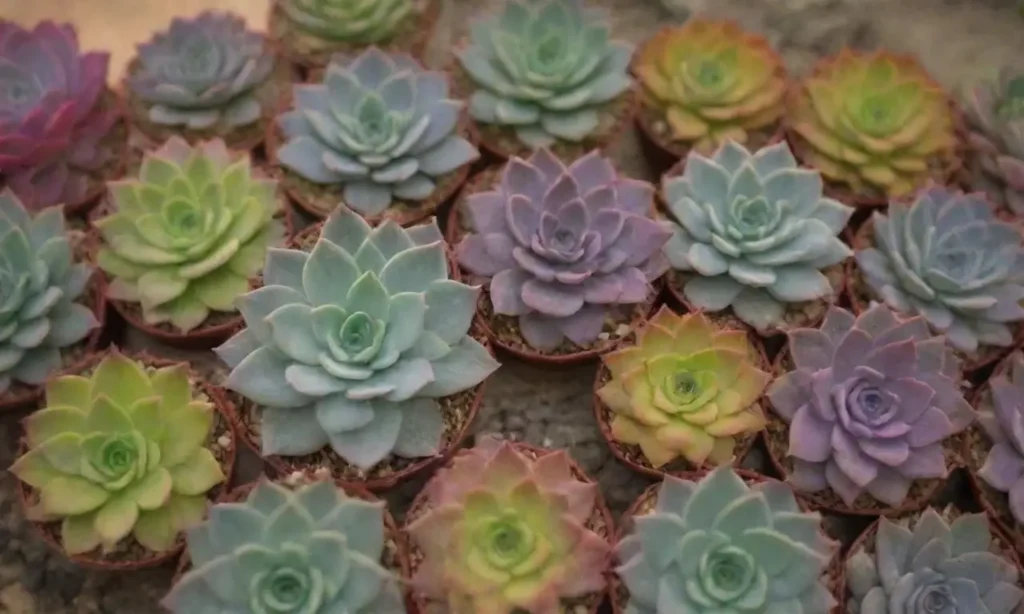
- Introduction
- What is Succulent Propagation?
- What Tools & Materials Do I Need for Propagation?
- How Do I Propagate Succulents from Leaf Cuttings?
- How Do I Propagate Succulents from Stem Cuttings?
- What Are Offsets and How Do I Propagate Them?
- What is the Best Time to Propagate Succulents?
- Common Troubleshooting Tips for Succulent Propagation
- Storing and Caring for Newly Propagated Succulents
- Conclusion
Introduction
Succulents have become increasingly popular among gardening enthusiasts and houseplant lovers alike. Their vibrant colors, unique shapes, and minimal care requirements make them an ideal choice for both novice gardeners and seasoned horticulturists. The beauty of succulents does not just lie in their appearance; it also includes the fascinating aspect of propagation. Propagation is the process of creating new plants from existing ones, and succulents lend themselves particularly well to this method due to their adaptability and resilience.
In this article, we will delve into common questions related to succulent propagation. Whether you’re looking to expand your collection, share plants with friends, or save a struggling succulent, understanding the nuances of propagation will set you on the right track. We'll cover everything from basic techniques to troubleshooting common issues, ensuring that you're well-equipped to successfully propagate your succulents.
What is Succulent Propagation?
Succulent propagation refers to the process of reproducing new plants from existing succulents. This can be done through various methods, including leaf cuttings, stem cuttings, offsets, and division. Each of these techniques takes advantage of the inherent water-storing capabilities of succulents, allowing them to thrive in less-than-perfect conditions.
The most common method of propagation is by leaf cuttings, where healthy leaves are gently removed from the parent plant and allowed to root in soil or water. This method not only allows you to clone your favorite succulents but also serves as a cost-effective way to grow your collection. It’s essential to have healthy, mature leaves for propagation; leaves that are too small or damaged may not produce viable new plants.
Another popular method is through stem cuttings, which involves cutting a section of the stem from the parent plant and letting it form roots on its own. Stem cuttings are particularly effective for succulents that grow in an upright manner, as the cuttings tend to root faster and stronger than leaf cuttings. Propagation through offsets (the small pups that grow around the base of the parent plant) is another effective and easy method, especially with species like Agave and Aloe.
What Tools & Materials Do I Need for Propagation?
Before embarking on your propagation journey, it's crucial to gather the necessary tools and materials to ensure success. The most important item is a well-draining potting mix specifically designed for succulents or cacti. Standard potting soil retains too much moisture and can lead to root rot, which is particularly detrimental to succulents. A soil mix containing materials like perlite, pumice, or sand will provide the drainage succulents need.
Next, you'll need a clean, sharp knife or scissors for making cuts. Sterilizing your cutting tool is crucial to prevent any bacterial infections that could compromise the health of your cuttings. You can use rubbing alcohol or a flame to sterilize your scissors or knife before starting.
 Top 10 Propagation Methods for Your Favorite Succulent Species
Top 10 Propagation Methods for Your Favorite Succulent SpeciesAdditionally, consider having small pots or trays ready for planting your propagations. If you’re using leaf cuttings, shallow trays are great for accommodating multiple leaves at once. For stem cuttings and offsets, choose pots that offer ample spacing for root growth. Lastly, consider a clear plastic bag or a humidity dome to cover your newly propagated succulents, as this will help to maintain a humid environment conducive to root growth.
How Do I Propagate Succulents from Leaf Cuttings?

Propagating succulents from leaf cuttings is one of the simplest yet most rewarding ways to grow new plants. To begin, select a healthy leaf from the parent plant. Gently twist the leaf off, ensuring that you’re taking a full leaf that includes the base. If a part of the leaf breaks off, it’s best to avoid using it, as it may not root successfully.
Once you have your leaf, allow it to callous over for a few days. Place the leaf on a dry paper towel or a plate in a shaded area to let the cut end dry out and harden. This callousing step is important as it protects the leaf from rot once it comes into contact with soil.
After a few days, you can plant the leaf in your prepared succulent mix. Simply lay the leaf flat on the soil surface or bury the calloused end slightly if you prefer. Mist the soil lightly to help establish moisture but avoid soaking it, as too much water will lead to rot. Place your pot in a well-lit area, but out of direct sunlight, until the new roots form. After a few weeks, you may start to see baby succulents sprouting from the base of the leaf. At this point, you can begin to treat them like regular succulents.
How Do I Propagate Succulents from Stem Cuttings?
Succulent propagation through stem cuttings is a bit more direct than leaf propagation and can yield impressive results. To start, use your sterilized knife or scissors to cut a healthy stem from the parent succulent. Make sure your cutting is at least a few inches long and includes several nodes. Nodes are the small, wart-like bumps along the stem where leaves grow and are essential for new root development.
Similar to leaf cuttings, the cut end of the stem must be allowed to callous. Lay your cutting in a dry, shaded area for three to five days, aiming for it to develop a callous at the cut end. This is a vital step as it mitigates the risk of rot.
 Step-by-Step Instructions for Propagating Succulents in Water
Step-by-Step Instructions for Propagating Succulents in WaterOnce the stem has calloused, plant it upright into your prepared soil mix. Ensure that at least one node is buried in the soil. Water the plant lightly, and place it in indirect sunlight. Keep the soil moist but not soggy, and in a few weeks, you should notice signs of growth, including new leaves and roots. Once established, they can be treated like fully-grown succulents.
What Are Offsets and How Do I Propagate Them?
Offsets, often called pups, are small plants that grow at the base of certain succulents and cacti. Many succulents produce offsets as a way to propagate themselves naturally. To propagate offsets, you simply need to remove them from the parent plant carefully. Use your fingers (or a sterile tool if needed) to gently wiggle the offset away from the main plant, ensuring you get some roots along with it.
Once separated, allow the offset to callous over for a day or two. This is the same process used with leaf and stem cuttings, allowing the cut area to dry. When handling offsets, ensure that the parent plant is healthy and well-watered beforehand, as this will give the offsets the best chance for survival.
After the callousing period, plant the offset in a suitable potting mix. Water it lightly and place it in an area with bright, indirect light. Offsets typically root more quickly and readily than leaf or stem cuttings due to their existing roots. Within a few weeks, your new plants should begin to grow and can be cared for like mature succulents.
What is the Best Time to Propagate Succulents?
The best time to propagate succulents largely depends on the specific climate and the type of succulent you’re working with. However, many gardening experts recommend propagating succulents during the spring and summer months. This is when succulents are actively growing due to increased sunlight and warmth. During this period, your cuttings are more likely to develop roots quickly and establish themselves successfully.
In areas with distinct seasons, avoid propagating in the colder months, as succulents tend to go dormant. While they can technically be propagated at any time, the success rate generally drops during dormant periods. If you live in a warmer climate with minimal temperature fluctuations, you have more flexibility, but still aim for the warmer months for improved success.
Pay attention to the specific needs of your succulent species, as some may have varied optimal growing times. Always ensure that your parent plants are healthy and well-hydrated before attempting propagation, as their vigor will directly affect the success of your cuttings.
 Understanding the Role of Humidity in Succulent Propagation
Understanding the Role of Humidity in Succulent PropagationCommon Troubleshooting Tips for Succulent Propagation
Despite the straightforward nature of succulent propagation, you may encounter some issues along the way. Here are some common problems and their solutions:
Rotting: If your cuttings are rotting, make sure you’re not overwatering. Allow the soil to dry out completely between waterings, as succulents thrive in dry conditions. If you see rot, it may be best to cut away the affected parts and try propagating again with fresh cuttings.
Wilting: Wilting can occur if your cuttings are not receiving enough water or light. Ensure they’re in a bright but indirect lighting situation and mist the soil lightly to maintain some humidity during the rooting phase.
Slow Growth: If your propagations seem stagnant, consider the amount of light they’re receiving. Rotting and poorly-draining soil can also lead to slow growth, so check the drainage medium and adjust your watering schedule.
By remaining attentive to your succulents’ conditions and needs, you can better troubleshoot and nurture your propagations, ensuring they transition into thriving adult plants.
Storing and Caring for Newly Propagated Succulents
After successfully propagating your succulents, it’s crucial to provide the right conditions for them to flourish. For the first few weeks, keep your cuttings in a semi-shaded spot that receives bright, indirect light. Avoid placing them in direct sunlight until they are well-established, as young plants can easily become scorched.
Monitoring water is essential here; use a spray bottle to provide moisture without soaking the soil. Typically, you should water every few days, depending on the humidity and temperature of your environment. Once you see new growth, gradually introduce your succulents to more light and slightly increase the frequency of watering.
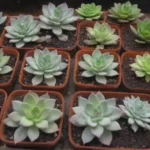 Using Propagation Trays: A Complete Guide for Succulent Lovers
Using Propagation Trays: A Complete Guide for Succulent LoversOnce the propagations have formed substantial roots—usually within four to six weeks—you can consider transplanting them to larger pots if necessary. Be mindful not to disturb the roots excessively during transplant as they are still delicate. From this point onward, continue giving them the same care as you would mature succulents, ensuring they receive enough light, water, and air circulation.
Conclusion
Succulent propagation can be an incredibly rewarding hobby, allowing you to replicate your favorite plants and share them with friends and family. By employing methods such as leaf cuttings, stem cuttings, and offsets, you can easily expand your collection while nurturing your gardening skills. Ensuring you have the right tools and materials, understanding when to propagate, and being able to troubleshoot common problems will set you up for success.
Remember, every succulent species may have its particular quirks, but the general principles of propagation remain constant. Take the time to experiment and learn as you go, and don’t be afraid to make mistakes! Success in succulent propagation comes with patience, observation, and a willingness to adapt your methods based on your experiences.
As you grow in your understanding of succulent propagation, you may even find that this process not only enriches your gardening expertise but also deepens your appreciation for these resilient and beautiful plants. Happy propagating!
If you want to read more articles similar to Succulent Propagation FAQs: Answers to Common Questions, you can visit the Propagation Methods category.

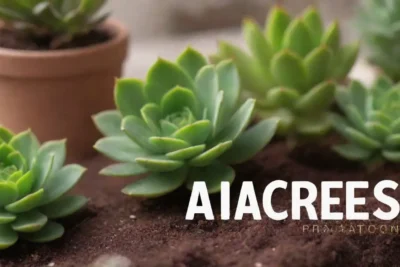

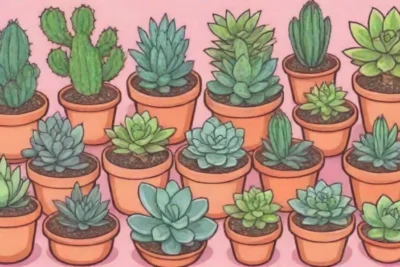
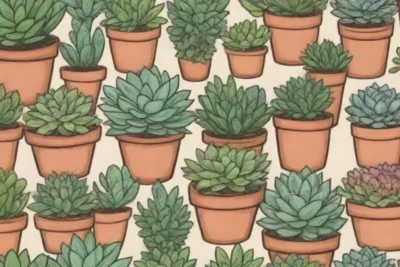
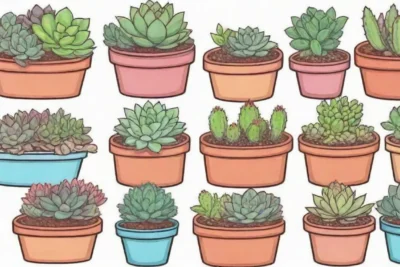
You Must Read